
Architectural renovation technology: Exterior wall renovation materials
Reliable safety measures against exterior wall tile detachment incidents
In recent years, there has been a strong demand for the effective utilization of existing stock. Exterior walls made of tiled or fragile mortar substrates are at risk of detachment accidents due to aging and earthquakes. Our spalling prevention and tile refurbishment material, 'Modern Art Stone', is a renovation material and method that not only prevents detachment of exterior walls but also achieves the longevity of buildings.
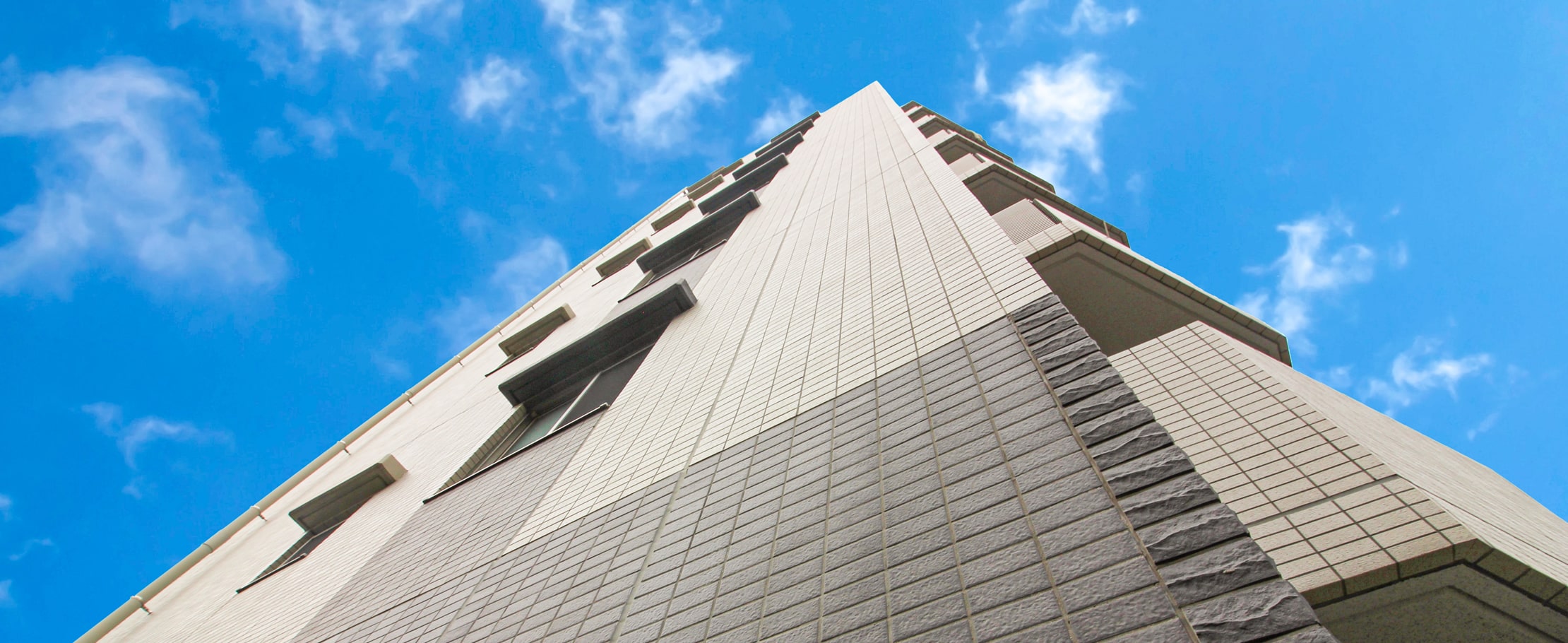
Spalling Prevention and Tile Refurbishment Material: Modern Art Stone Method
Premium Exterior Wall Refurbishment Material Ideal for Tile Refurbishment
The beauty of porcelain tile finishes lies in their sophistication and the protective functionality they offer buildings. However, as deterioration progresses, there is a risk of concrete or mortar fragments, as well as tile shards, detaching, potentially leading to spalling. Maintenance requires selecting a method that is optimal for "spalling prevention," "maintenance of design aesthetics," and "selection of a method appropriate for site conditions." Modern Art Stone is the ideal method for meeting these conditions.
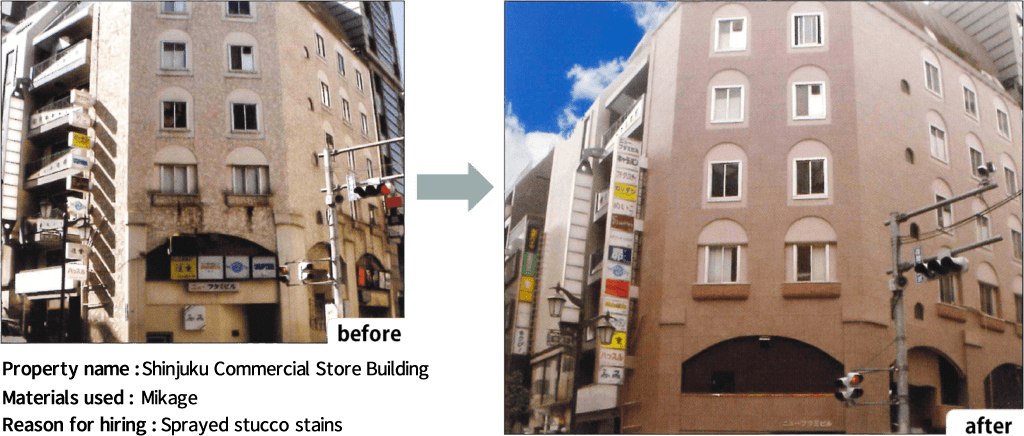
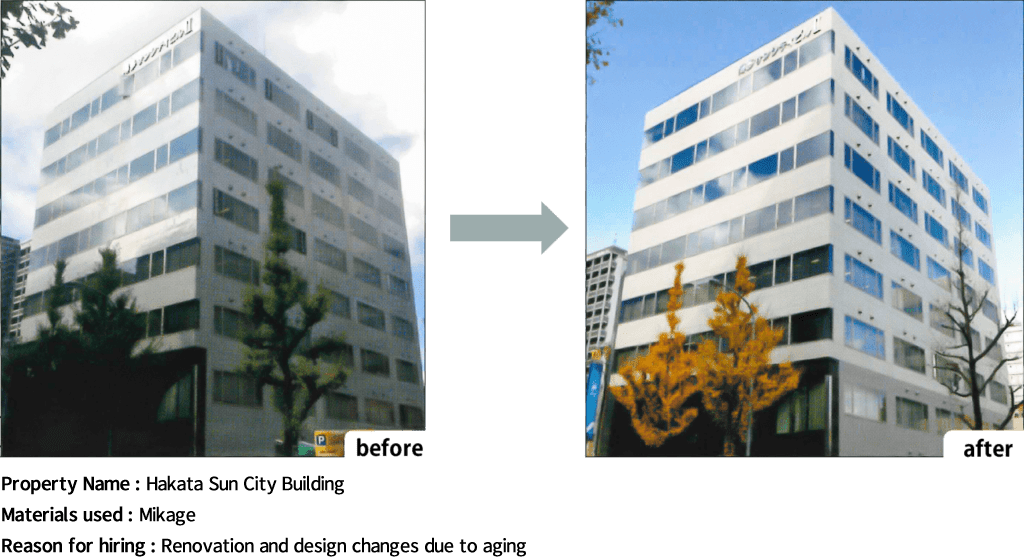
Features of the Modern Art Stone Method
- MODERN ART STONE -
The Modern Art Stone method offers high design versatility, allowing existing designs to be upgraded with a luxurious stone-like appearance. Through the use of highly durable bonding agents and a cladding method, it provides protection for the entire building while also imparting waterproofing properties, effectively shutting out deterioration factors on exterior walls. Additionally, the lightweight materials help reduce the burden on the building. With its construction method that allows refurbishment without removing porcelain tiles, it ensures a quiet, odorless, and dust-free process, ensuring a safe and secure construction environment.
Cladding method (KS-MA method)
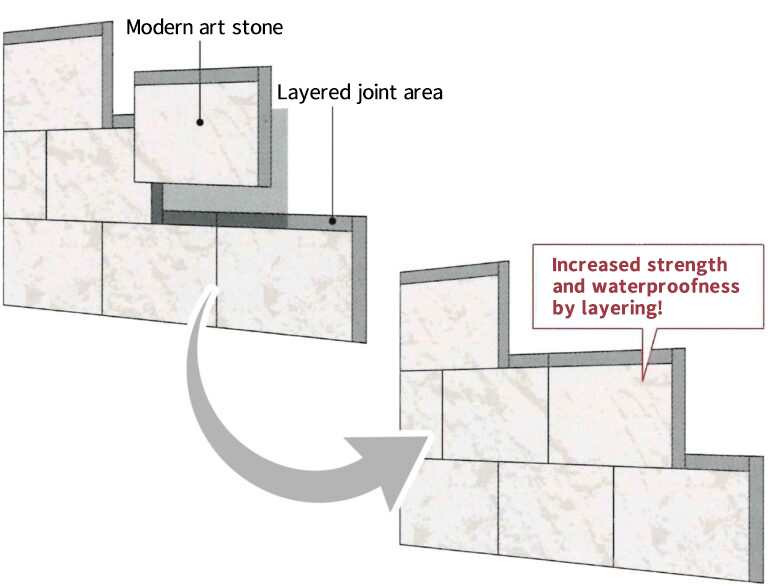
The standard method for Modern Art Stone, the cladding method, involves individually bonding and adhering each piece with high-durability specialized bonding agents, ensuring seamless integration. By overlapping the joints, the finishing layer becomes a continuous single wall, resulting in a more robust exterior wall.
The attractiveness of the construction process lies in its simplicity
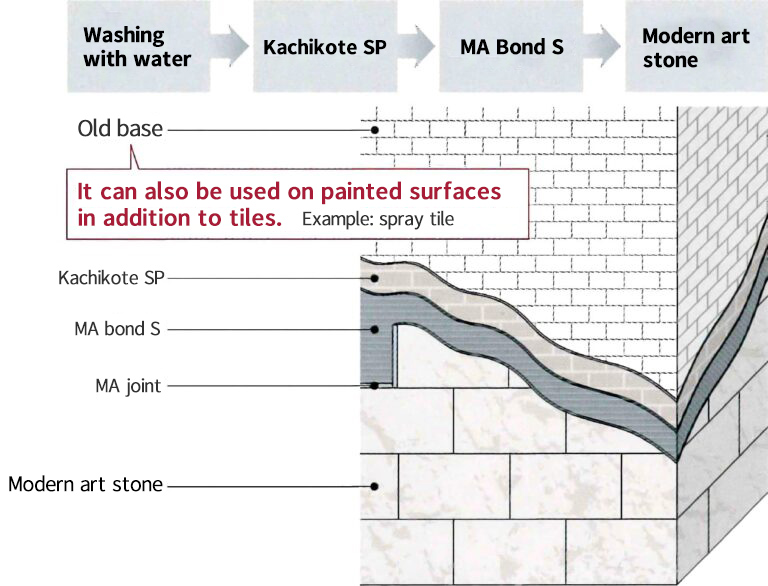
For porcelain tile installation, the procedure depicted in the above diagram is followed. During high-temperature conditions such as summer, it is recommended to apply MA sealer as an absorption inhibitor after preparing the substrate. This helps reduce absorption into the bonding substrate and improves workability during application.
Porcelain Tile Refurbishment Method
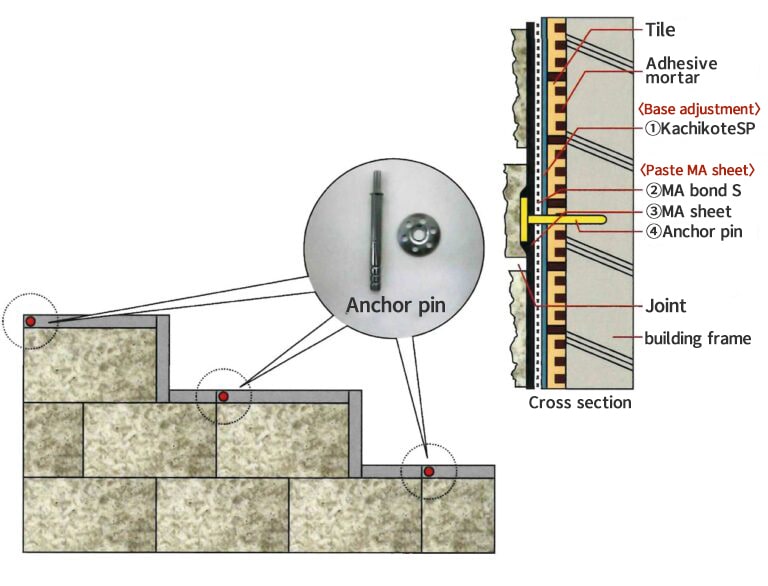
This construction method adds specialized anchor pins to the armored construction method, providing a consistent finish with increased reinforcement, making it ideal for situations where stronger reinforcement is required. It is ideal for reducing construction waste on-site because it can be renovated while leaving the foundation intact.
Clearance of Spalling Prevention Performance Test Standards
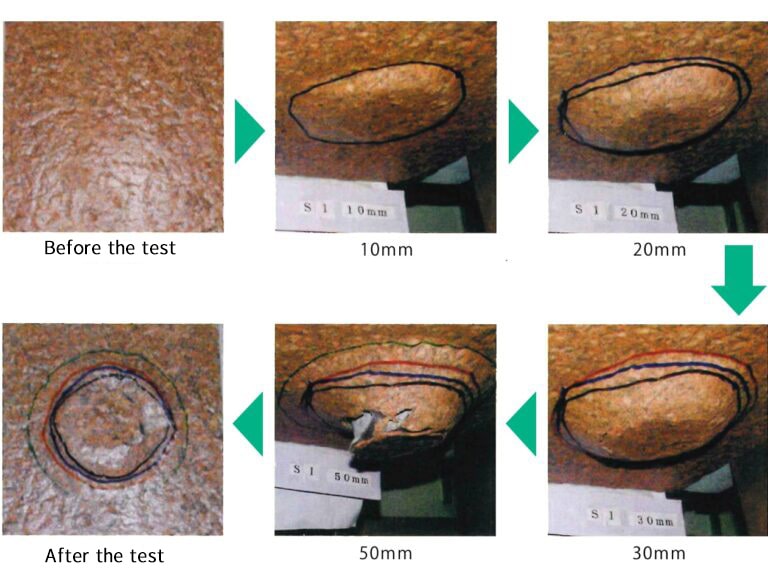
The porcelain tile refurbishment method has been proven to meet the performance criteria of the Japan Road Corporation (now NEXCO) for concrete spalling prevention measures. It clears the standard value of 1.5kN for the pull-out strength in the spalling prevention push-out test, demonstrating its reliable safety.
